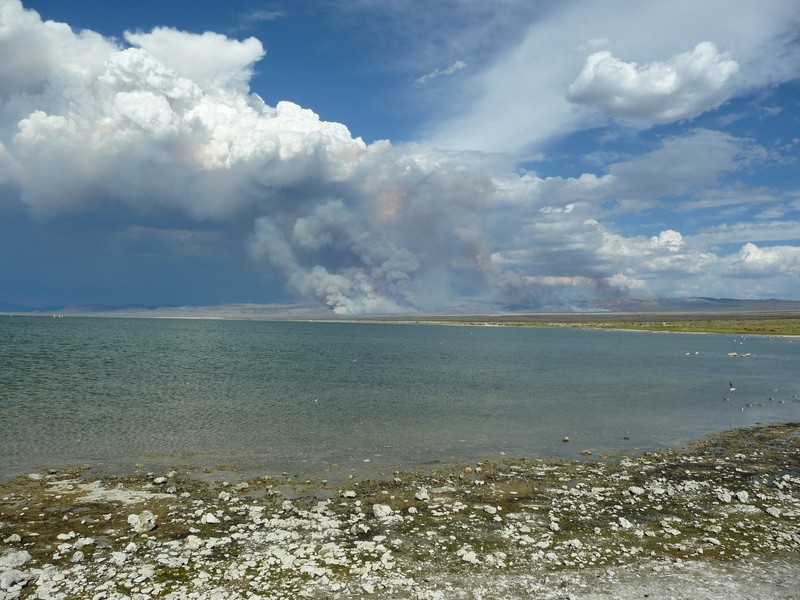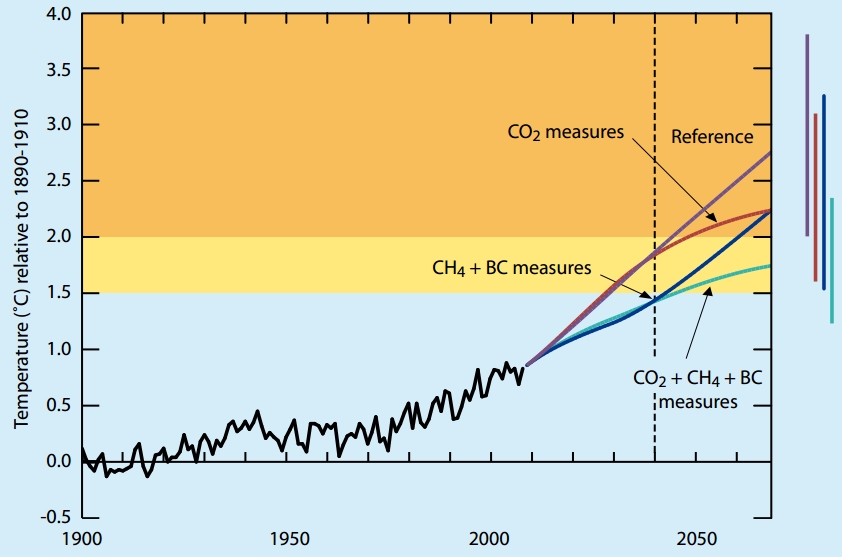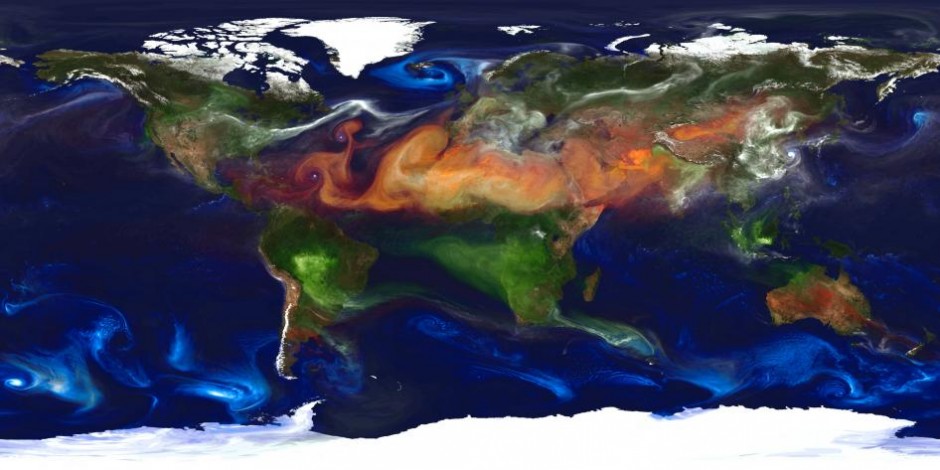My second day at the AGU 2013 Fall Meeting revolved around more short-lived climate forcers, which I wrote about yesterday and also a broader session on the results from the recent IPCC Working Group 1 report. The latter was an opportunity for the community to quiz some of the lead authors of the report on a variety of issues including observations of the climate system, aerosol and clouds (yippee!), carbon cycle feedbacks, sea level rise and future changes.
Oliver Boucher gave a very nice overview of the aerosol and clouds chapter that he was a coordinating lead author for. I suspect it was a condensed version of the presentation he gave at the “Next steps in climate science“ meeting at the Royal Society, which I summarised here previously.

Smoke aerosol feeding a convective cloud system over Mono Lake, California. Image from EGU Imaggeo image repository and is provided by Gabriele Stiller.
One of the key messages for me was his conclusion that there has been substantial improvements in our understanding of aerosol and cloud processes since the previous IPCC report in 2007 but that this ‘knowledge’ hasn’t quite made its way into current global climate models. As someone who works on understanding aerosol processes from observations of the ambient atmosphere, this is something I very much agree with! The implication here is that aerosol uncertainty will reduce in the future as this knowledge is translated to future climate models. We can but hope.
Some of the other key points from his talk included:
- Confidence in satellite based global average aerosol optical depth trends is low.
- Black carbon dominates uncertainty in aerosol radiative forcing.
- Many gaps in understanding including absorption by black carbon, trends and circulation changes due to aerosol forcing.
- Low level clouds are the “joker in the pack” of cloud feedbacks as they are the least understood area for clouds.
Still plenty of work to do!
Emission reductions
The short-lived climate forcers session in the afternoon included a very nice study of how emission regulations in California have affected air pollutant emissions, including black carbon. Tom Kirchstetter presented measurements of trucks using the Oakland port just across the bay from the AGU venue in San Francisco. The neat thing about the study was that this was done over several years both before the regulations were in place and afterwards. The regulations required diesel particle filters to be installed in new trucks, while old trucks had to be retro-fitted with them.
These new regulations have seen an 80% decrease in black carbon emissions over 4 years. The reduction is about 5-times faster than ‘natural’ fleet turnover, which occurs more gradually as new vehicles with improved engines replace older models. The new rules apply to 10,000-20,000 vehicles and will likely significantly improve air quality in the area. Further regulation will soon come into force for 1 million buses and trucks, which could have profound impacts on black carbon emissions in California.
This will likely be an interesting area to keep an eye on in terms of the wider potential impacts on air quality and climate.




